Seasoning is the key to a properly functioning wok. I knew that even before I became serious about cooking.
Though woks have been around for about 2,000 years, historians aren’t clear on why they were invented. One thing is for sure, though — they allow you to cook an entire meal in a single pan, which is why there will always be a place for woks in my kitchen!
The question is, what is wok oil, and how does it contribute to that all-important nonstick coating? I had to do a little bit of research on that, but my personal experience also contributed to the advice I’ll share here.
There are a couple of key points to remember when shopping for oil. First, you’ll require oil with a high smoke point, since stir-frying takes place at such high temperatures.
Vegetable oils and peanut oil are standard, but these can have their drawbacks as well. In this guide, you’ll learn more about these oils, as well as the following:
- What is the smoke point of oil?
- How to cook using a wok
- Best cooking temperature when using woks
- Best oils for woks
- How to use these oils for seasoning
- Oils with low smoke points — and whether they’re suitable
- Wok cooking techniques
- How much oil to use — and whether you can avoid it
Table of Contents
- 1. What Is Wok Oil? →
- 2. Smoke Point 101 →
- 3. How to Cook in a Wok →
- 4. Best Wok Cooking Temperature →
- 5. Best Oils for a Wok →
- 5.1. Safflower Oil →
- 5.2. Sunflower Oil →
- 5.3. Peanut Oil →
- 5.4. Vegetable Oil →
- 5.5. Grapeseed Oil →
- 5.6. Flaxseed Oil →
- 5.7. Corn Oil →
- 5.8. Almond Oil →
- 5.9. Sesame Oil →
- 5.10. Extra-Light Olive Oil →
- 5.11. Extra-Virgin Olive Oil →
- 5.12. Coconut Oil →
- 5.13. Cottonseed Oil →
- 5.14. Avocado Oil →
- 5.15. Soybean Oil →
- 5.16. Canola Oil →
- 5.17. Flavored Specialty Oils →
- 6. Can You Use Wok Oils for Seasoning? →
- 7. Can You Use Oils with Low Smoke Points for Cooking in a Wok? →
- 8. Popular Wok Cooking Techniques →
- 9. How Much Oil Do You Need? →
- 10. 5 Best Oils For Woks →
- 11. Useful Resources →
What Is Wok Oil?
The term “wok oil” refers to the oil that you add to the pan during cooking. It can also be used to season the pan before you begin.
In this article, we’ll cover all the various questions related to the “what is wok oil” debate.
Smoke Point 101
When discussing oil products, you’ll often hear chefs throw around the term “smoke point.” I’ve done it myself already. But what does this mean?
As the name suggests, the smoke point — also know as the burning point is the point at which the oil will begin to produce smoke. When this happens, the oil may start to taste and smell strange.
Aside from ruining your dish, this phenomenon can make it difficult to breathe around the work station. It can also pose a fire hazard.
Here’s what Andrew Zimmern has to say about it:
For wok cooking, use oils with a high smoke point and low polyunsaturated fat content. Grapeseed oil, peanut oil, etc…
For obvious reasons, it’s better to use an oil with a high smoke point for cooking applications like sauteing and deep-frying. Most of the cooking that’s done in woks will fall under this category.
This instructional video is packed with more useful information:
How to Cook in a Wok
Although woks should get very hot, it’s unlikely that yours will get as hot as they do in a professional kitchen. That means you’ll have to follow a precise order for adding the ingredients.
As a rule of thumb, you’ll saute the protein first for about 5 minutes before removing it to a rimmed plate. Aromatics will follow for 1 minute, then vegetables for 1 to 6 minutes, depending on what they are. Sauces are added during the last minute or two.
Here’s a step-by-step guide on how to make a stir-fry using a wok.
1. Set the wok over medium-high heat until hot. Add 1 tablespoon of your chosen oil and swirl the pan to evenly coat the bottom and sides.
2. Pat the protein dry using paper towels. This step is important because the protein won’t brown properly if it isn’t dry enough.
3. Add the protein to the hot oil in a single layer and let it sit without stirring for about 2 minutes. Then use a spatula to stir and flip the protein so that the other side can get a good sear on it as well.
4. Stir the protein until it’s nearly cooked through, then season with salt. Remove protein to a rimmed plate.
5. Set the pan back over medium-high heat and add another tablespoon of oil. Add your aromatics — this could be minced garlic, ginger, lemongrass, chili peppers, onions, or a combination — and stir for about 1 minute, or until fragrant.
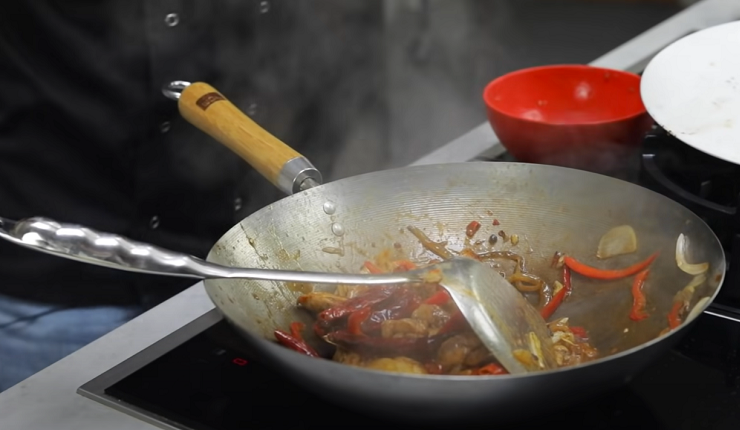
6. Add vegetables and saute until tender. You should add hard veggies like broccoli and carrots first, then add in softer ones such as bell peppers and snow peas after a minute or two. Save leafy greens and tomatoes for last.
7. Stir and flip the veggies frequently until they’re crisp-tender. If they start to char before they’re cooked through, or if the pan looks too dry, add a tablespoon or two of water. You can also put the lid on the pan during this step to steam the hardier vegetables.
In this article, you’ll learn how to get your pan sparkling clean even after dealing with burned-on food.
8. Return the protein and any accumulated juices to the pan (this is why you used a rimmed plate). Add sauce by pouring it down the sides of the wok so it will heat up quickly. Now is also the time to add pre-cooked rice or other grains to the mixture.
9. Toss together to ensure that everything is thoroughly coated in sauce, then serve immediately.
The Foodsguy offers this tip:
Because of the steep sides of a wok, tossing the food inside removes the need for constant stirring and the material is usually designed to transfer the heat up the sides, increasing the speed at which your food is cooked.
10. Remember to store any leftovers in the fridge. You can find out more about how long leftovers might keep by clicking here.
Best Wok Cooking Temperature
If you’re using your wok as a deep fryer, the oil should heat to 365-400 degrees Fahrenheit. At these temperatures, the oil is hot enough to form a nice golden crust, but not so hot that it will burn the outside before the food has a chance to cook through.
Find out how to choose the best unit for your glass top stove here.
For stir-frying, hotter temperatures are ideal. The surface of your wok should be at around 500 degrees before you start adding ingredients. That’s why it’s so important to choose an oil with a high smoke point.
Looking for more tips on timing and temperature? You can find them here.
Best Oils for a Wok
What are some of the best wok oils? Here’s what you need to know about the various offerings.
This video should also come in handy:
Safflower Oil
If you can find it, safflower oil is ideal for woks. With a smoke point of nearly 500 degrees, you won’t have to worry about it having adverse effects on the quality of your ingredients.
Though it’s also high in vitamin E, safflower oil doesn’t contain many other nutrients. Fortunately, when you’re stir-frying, you’re usually getting plenty of vitamins from the protein and vegetables.
Sunflower Oil
Sunflower oil shares many properties with safflower oil, including its high smoke point of around 450 degrees. When refined, it also has a mild flavor and plenty of vitamin E. The key difference is that it comes from the sunflower, rather than the safflower, plant.
Peanut Oil
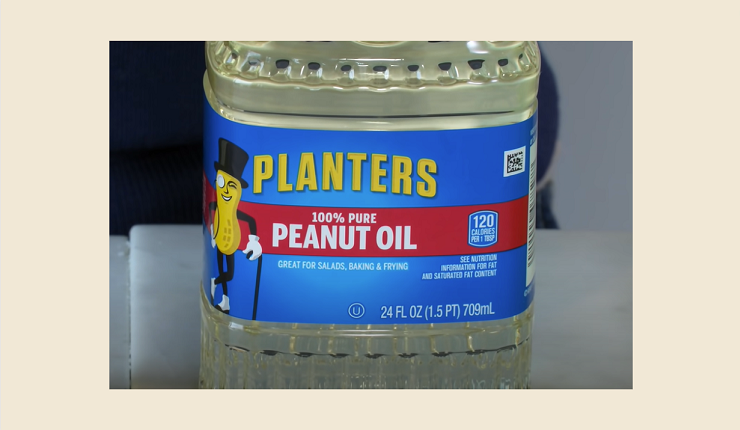
Peanut oil has a neutral flavor and a smoke point of 450 degrees, making it an excellent choice for wok use. It’s also a great source of vitamin E.
For many chefs, peanut oil is the go-to choice when stir-frying or deep-frying. It won’t interfere with the flavors of the dish, and it’s typically easy to find. It can even pull double duty as a massage oil.
Vegetable Oil
Since regular vegetable oil has virtually no flavor of its own, it’s perfect for wok dishes. It’s also relatively inexpensive and readily available — two more factors that work in its favor.
Vegetable oil’s smoke point hovers around the 400 degree mark. Feel free to use it the next time you’re in the mood for a stir-fry or whenever you need to season your pans.
Grapeseed Oil

If you’re looking for an oil that is high in nutrients, grapeseed oil could be just the ticket. In addition to the vitamin E, it’s also rich in omega-6 fatty acids and vitamins C and D, which help the body fight inflammation.
Grapeseed oil is extracted from the seeds left behind after the grapes are pressed to make wine. It has a smoke point of 420 degrees, so it’s suitable for stir-frying.
Flaxseed Oil
Flaxseed is useful in preventing inflammation, so many people use it as a dietary supplement. It may even have properties that reduce the risk of cancer.
We don’t recommend using flaxseed oil in woks. Its smoke point sits at just 225 degrees, so it’s likely to impart a bitter flavor when used in stir-fries and other dishes that require high-heat cooking applications.
Corn Oil

Like peanut oil, corn oil has a smoke point of 450 degrees. It’s commonly used in deep-frying, but it’s also a popular ingredient in baked goods, marinades, and salad dressings.
Because corn is not a naturally fatty ingredient, the oil has to go through an extensive refining process. This may introduce harmful compounds. Therefore, this isn’t considered one of the healthiest options out there.
Almond Oil
You’ve probably heard that raw nuts are a good source of vitamins, minerals, and protein. They’re also high in fat, which is why they’re often pressed to make oil.
Almond oil contains magnesium, phosphorous, and copper, so it can be healthy in small doses. It retains a slightly nutty flavor as well. Despite its high smoke point of 430, we think it’s a better choice as a finishing oil or a salad dressing ingredient than as a wok oil.
Sesame Oil
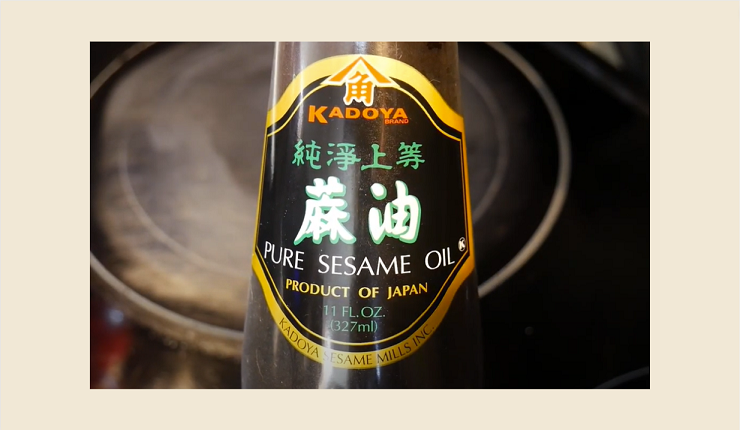
Most of the time, you’ll be using sesame oil as a finishing touch on your dishes. Made from pressed sesame seeds, it has a warm, toasty, nutty flavor that’s ubiquitous in Chinese cooking.
Unrefined sesame oil has a smoke point of just 350, meaning it’s not ideal as a base oil. But the semi-refined product can handle temps up to 450 degrees before it starts smoking. Make sure you check the label before you start to cook.
Extra-Light Olive Oil
Unlike extra-virgin olive oil, the extra-light version has been refined to the point where it’s robbed of most of its flavor. The refining process also gives it a smoke point of 460 degrees, meaning it’s suitable for use in woks.
Extra-Virgin Olive Oil
Also extracted from pressed olives, extra-virgin olive oil is left alone after the first pressing. Therefore, it isn’t as refined as the extra-light variety and retains a deep, rich flavor.
Extra-virgin olive oil has a lower smoke point than most vegetable oils — just 375. Though it won’t ruin your dishes with excess smoke, its flavor is so noticeable that we prefer to reserve it for low-heat cooking applications and salad dressings.
Coconut Oil
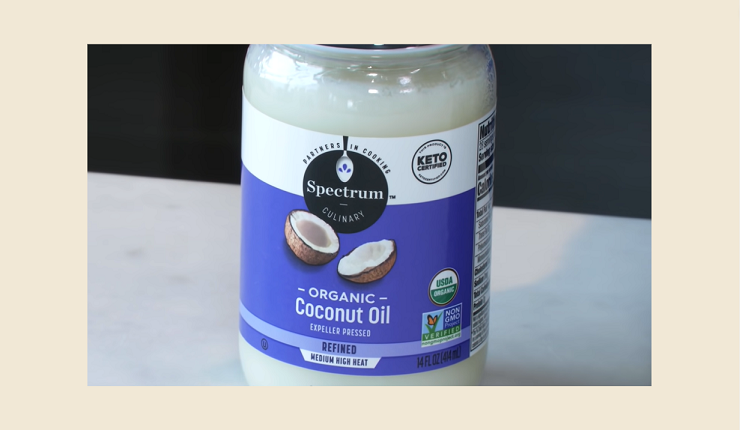
The health benefits of coconut oil are numerous and well-documented. Though it’s high in saturated fat, it boosts the cholesterol levels that support cardiovascular health.
In its unrefined form, coconut oil will begin smoking at around 350 degrees. If you can find a bottle of the refined stuff, you can expect it to have a smoke point of about 400 degrees.
Cottonseed Oil
As you’ve probably guessed, cottonseed oil is derived from the seeds of the cotton plant. It has a smoke point of about 420 degrees, putting it in the same category as most vegetable oils.
In addition to its uses in the kitchen, cottonseed oil may have moisturizing and anti-inflammatory properties.
Avocado Oil
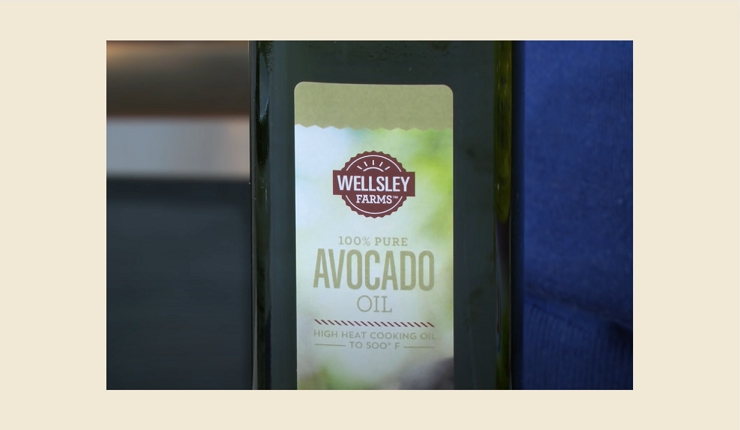
Since its smoke point sits at a whopping 570 degrees, avocado oil is one of the top picks as far as wok oil is concerned.
This oil comes from avocados, which are considered another “good” type of fat. The flavor is slightly richer than what you’d get from regular vegetable oil, but it still pairs well with a variety of dishes.
Soybean Oil
A popular cooking oil, soybean oil is also found in many salad dressings and condiments. It’s derived from the seeds of the soybean plant and is a good source of unsaturated fat.
Soybean oil’s smoke point is about 460 degrees, so feel free to keep a bottle on your shelf for seasoning and cooking in your wok. Some people even use it as a mosquito repellent.
Canola Oil
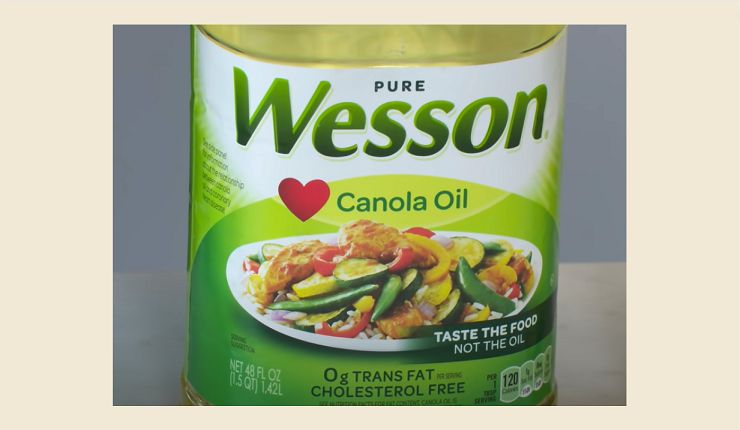
The canola plant is a variety of rapeseed, and canola oil is pressed from its seeds. It’s high in vitamins E and K, and has a neutral flavor that won’t overpower your other ingredients.
We always have a bottle of canola oil in our kitchen. It has a smoke point of 400 degrees, which makes it perfect for deep-frying. Best of all, it’s affordable in large quantities and easy to find on supermarket shelves.
Flavored Specialty Oils
There are numerous flavored oils on the market these days. Many use olive oil as their base, while others rely on more neutral oils.
You can find specialty oils specifically designed for use in woks if you look for them. They’re typically seasoned with garlic, onion, ginger, or other aromatics that can benefit a stir-fry.
If you use one of these flavored oils in your dishes, make sure you know the base ingredient so you can verify the smoke point. We would also recommend using them sparingly, as you don’t want to overwhelm the rest of your ingredients.
Can You Use Wok Oils for Seasoning?
Yes. If the oil is suitable for wok use, you can also use it to season the pan. Here’s how to do it.

- First, make sure the unit is clean and dry. You’ll want to follow the manufacturer’s instructions for this — some woks are dishwasher safe, but it’s usually better to wash them by hand.
- Preheat the pan by setting it over a burner set to high. Open kitchen windows and turn on the exhaust fan, as this step can cause the pan to smoke.
- Rotate the wok around the burner to expose more of the surface area to the heat. Toss a few drops of water into the pan to see if they sizzle and evaporate. Once they do, you’re ready to move on to the next step.
- Allow the pan to cool, then add your chosen oil to a paper towel or clean dishcloth. Coat the wok with a thin layer of oil, both inside and out.
- Reheat the pan over medium-high heat until it stops smoking. Continue to rotate the pan on the burner, repeating the process until all parts of the pan have reached this smoking point. The surface should turn dark and have a matte finish by the time you’re through.
- Rinse the pan under hot water and scrub with a wok brush. Then return it to high heat to remove any water particles.
At this point, you can either store the pan or repeat the process to give it a stronger nonstick coating.
If your wok gets rusty, you can find out how to clean it properly in this article.
Can You Use Oils with Low Smoke Points for Cooking in a Wok?
You can use oils with low smoke points in any dish as long as you don’t overdo it.

Sesame oil, for example, should be used as a finishing touch and not as the base oil. When you add them at the last minute, the low smoke point won’t have an adverse effect on the dish.
Popular Wok Cooking Techniques
How can you put your pan to good use? Here are some of the most popular cooking methods for this tool:
- Stir-frying
- Deep-frying
- Popping popcorn
- Steaming
- Steam-sauteing
- Smoking
How Much Oil Do You Need?
Once you’ve solved the “what is wok oil?” debate, your next course of action is to find out how much of it you need to use. In fact, do you need to use oil at all?
With most woks, you’ll need to apply a small amount of oil as a seasoning. Once you’ve gotten that out of the way, it shouldn’t be necessary to use a great deal of oil when cooking. Just a tablespoon or two should be enough to do the trick.
Some manufacturers claim that their woks don’t require any oil at all. If this is the case, you can skip the oil in the recipe you’re following to see how the dish turns out. Woks that require little to no oil are highly sought after, as they encourage low-fat cooking.
For tips on how to stir-fry without using oil, check out this video:
5 Best Oils For Woks
In my personal experience, I’ve found that these oils are among the best to use in woks:
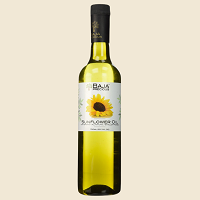 |
Baja Precious Sunflower Oil →
This sunflower oil is affordable, useful, and comes in an attractive bottle. |
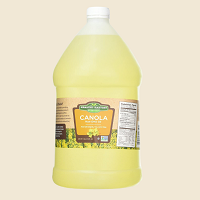 |
Healthy Harvest Canola Oil →
If you’re looking to buy canola oil in bulk, check out this versatile product. |
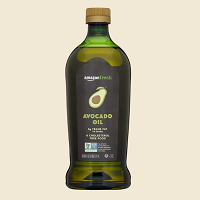 |
AmazonFresh Avocado Oil →
It’s always a good idea to keep avocado oil on hand when you have a wok in the household, and this is an excellent and reliable product. |
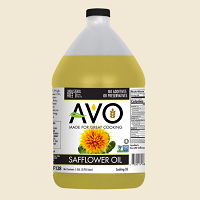 |
AVO Organic Safflower Oil →
You can save money by buying this mild-flavored safflower oil in bulk. |
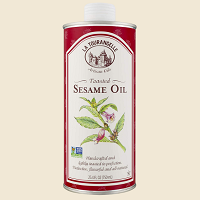 |
La Tourangelle Toasted Sesame Oil →
This richly flavored oil will give your dishes that authentic Chinese flavor you’re looking for. |
Try one of these the next time you’re planning to fire up your wok.
Useful Resources
- The Ultimate Guide to Cooking and Baking Without Oil →
- 9 Plant-Based Store-Bought Foods with Hidden Oils →
- Is Olive Oil Vegan? →
In Conclusion
What is wok oil? In short, it’s an oil that will extend the life of your product and complement your dishes without overwhelming them. As long as you remember that your base oil should have a low smoke point, you should be good to go.
- Lava Rocks Vs. Fire Glass – What Is Better for a Fire Pit? - November 15, 2023
- How to Light a Propane/Gas Fire Pit with a Manual or Electronic Ignition System - November 8, 2023
- How Long Does a Propane Tank Last for a Fire Pit - October 9, 2023

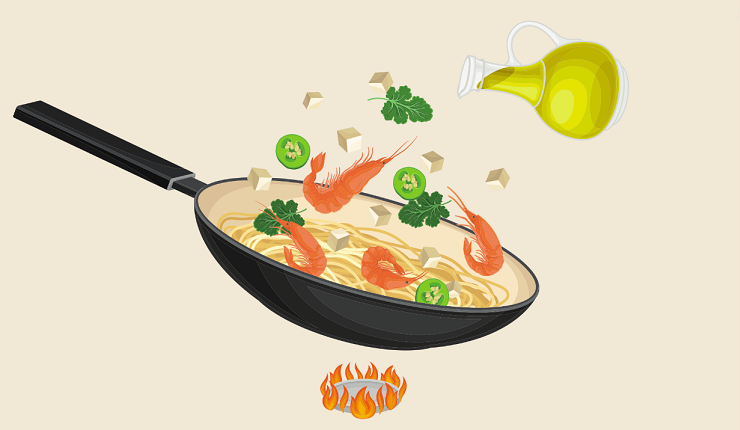
Thanks for one marvelous posting! I really enjoyed reading it, you might be a great author. I will be sure to bookmark your blog and will eventually come back later on.